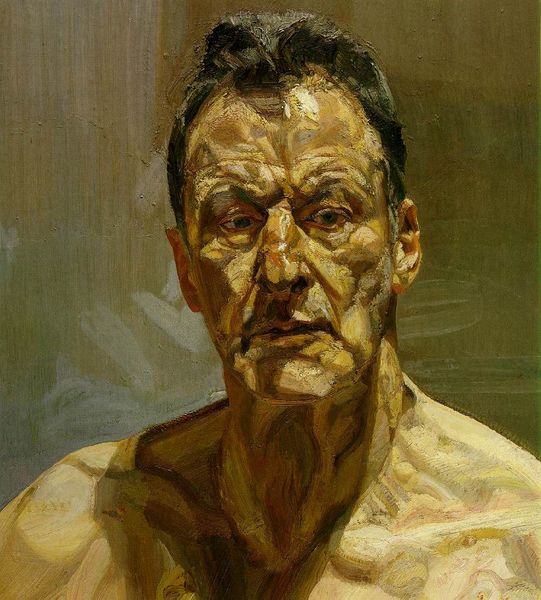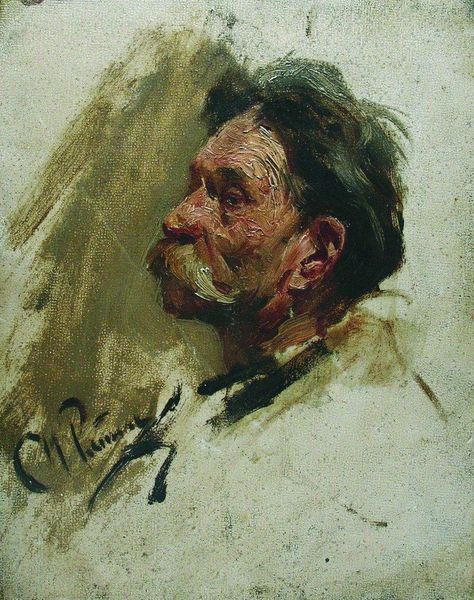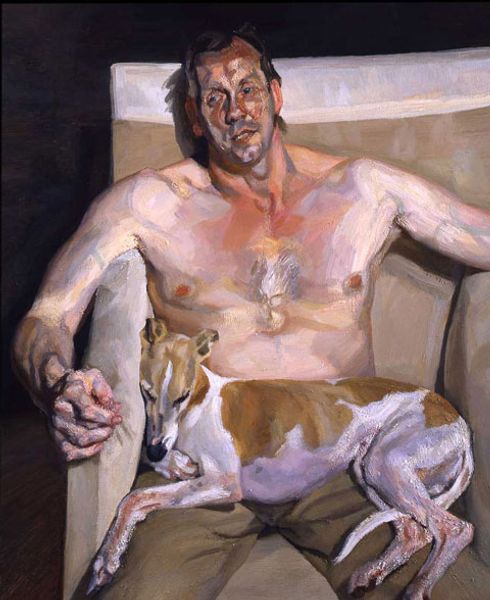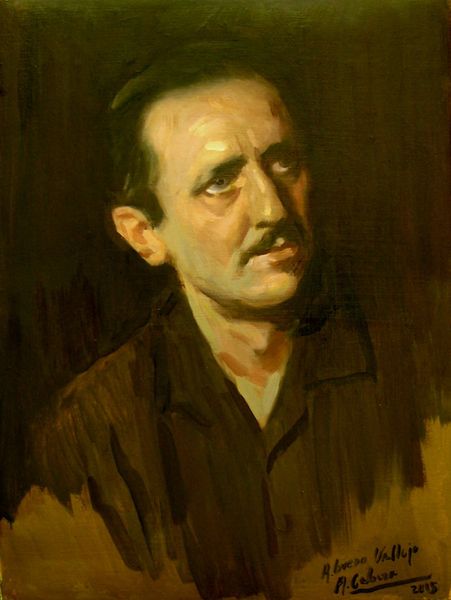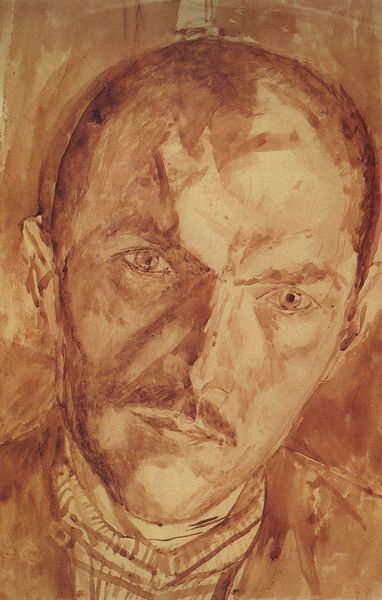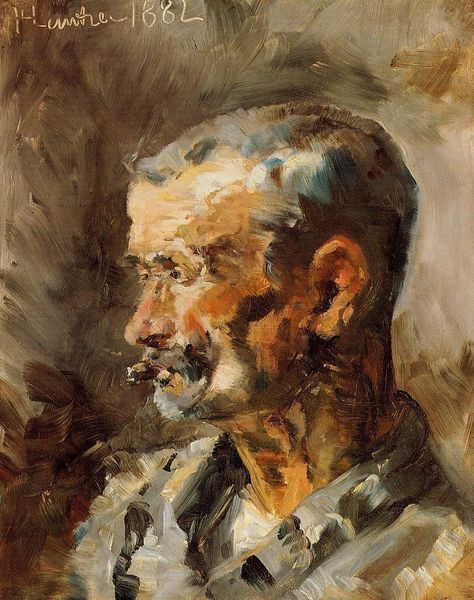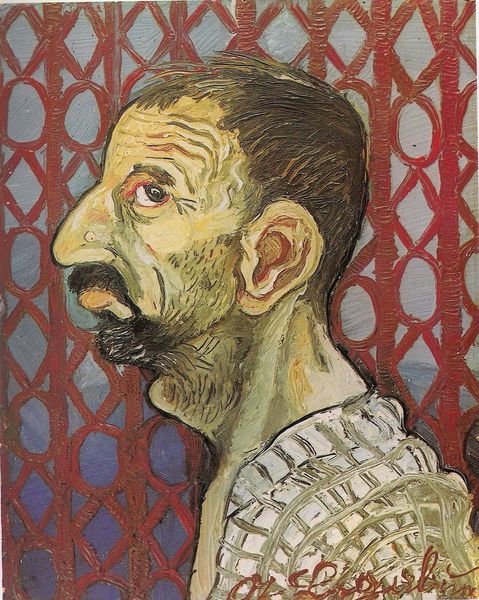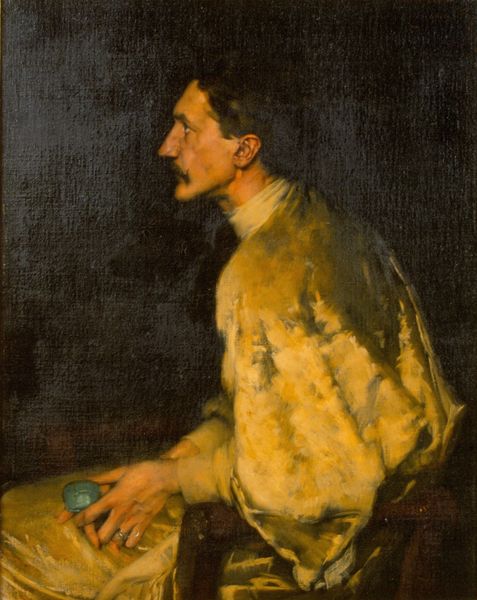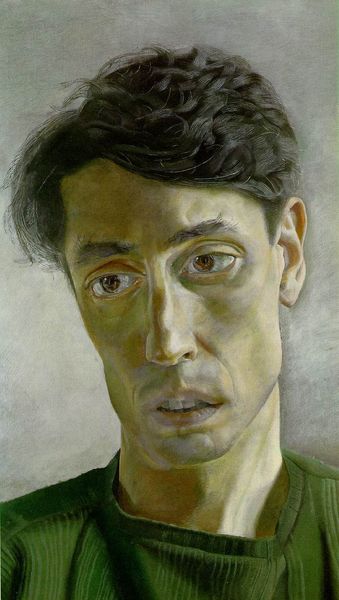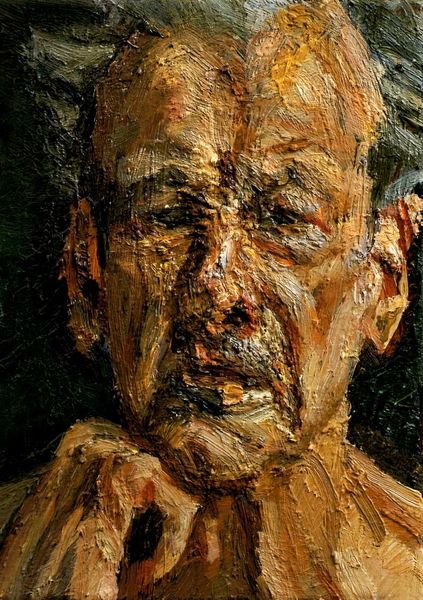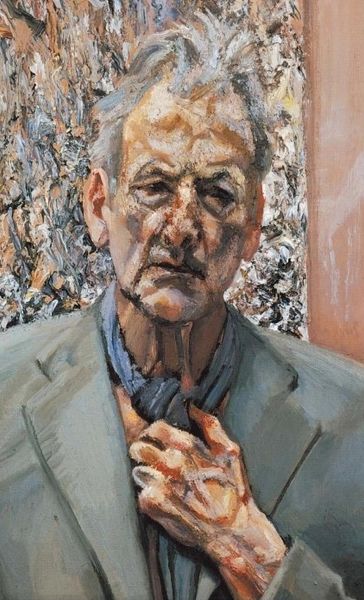
painting, oil-paint
#
portrait
#
contemporary
#
painting
#
oil-paint
#
figuration
#
oil painting
#
modernism
#
realism
Copyright: Jamie Wyeth,Fair Use
Editor: This is Jamie Wyeth's "Portrait of Shorty" from 1963, rendered in oil paint. The detail is quite striking, almost hyperreal. What do you see in this piece beyond the immediately apparent realism? Curator: The "realism" as you call it serves a specific socio-political function here. This isn't just a likeness; it's a depiction intended to be viewed by a particular audience and situated within a broader discourse of American identity. Who do you think "Shorty" represents? What visual cues lead you to that conclusion? Editor: Well, the working man, maybe? His clothes seem pretty casual, almost like everyday work attire. I also wonder what his positioning against such an ornate chair may suggest, something about class? Curator: Precisely! Consider the context: 1963. Post-war America. What visual rhetoric is deployed here to present a man like "Shorty," seemingly outside that dominant narrative, for public consumption? What is Wyeth doing with this seemingly simple portrait regarding the expectations of the upper class versus the image of a 'common' man? Is it social commentary? Perhaps it questions the ideal, or highlights the disparity in American culture? Editor: It feels almost… confrontational. Like Wyeth is daring the viewer to look, to really see this person who might be easily dismissed or overlooked. Curator: And the museum or gallery space becomes complicit in that act, doesn’t it? It elevates the "everyday" subject to a position of high art. Does that re-contextualization alter your perception? Is there an implied commentary on the power of representation within the art world? Editor: Absolutely. It makes you consider the values and assumptions inherent in art institutions. I hadn’t thought of it that way before, focusing on where it might have been displayed as part of its meaning! Curator: Considering the institutional framework helps to see how a seemingly straightforward portrait engages with complex cultural dialogues and challenges conventional perspectives. It also prompts reflections on the evolving public role of art. Editor: I’ll never look at a portrait the same way again!
Comments
No comments
Be the first to comment and join the conversation on the ultimate creative platform.
